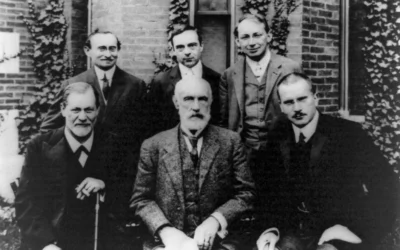
What is Systemic Constellations Therapy?
Systemic Constellations, also known as Family Constellations, is a therapeutic approach that aims to uncover and resolve hidden dynamics within family systems. Developed by German psychotherapist Bert Hellinger in the late 20th century, this method offers a unique perspective on how familial relationships and generational patterns can influence an individual’s life. The therapy involves a group process where participants act as representatives for family members or other elements of a client’s system, arranged spatially to reveal underlying relational dynamics.
Who Founded Systemic Constellations and What Led to Its Development?
Bert Hellinger, born in 1925 in Germany, was the primary founder of Systemic Constellations therapy. His journey to developing this approach was influenced by a diverse range of experiences and studies:
- Early Life: Hellinger grew up in Nazi Germany and was conscripted into the army at 17. He became a prisoner of war, an experience that deeply impacted his worldview.
- Religious Studies: After the war, Hellinger joined a Catholic religious order, spending 16 years as a missionary in South Africa. This exposed him to Zulu culture and their ancestral beliefs.
- Psychoanalytic Training: Upon returning to Germany, Hellinger left the priesthood and trained in psychoanalysis.
- Diverse Therapeutic Influences: He studied various therapeutic approaches, including Gestalt therapy, transactional analysis, and family therapy.
- Development of Family Constellations: In the 1970s and 1980s, Hellinger began synthesizing his experiences and knowledge into what would become Family Constellations.
Hellinger’s approach was influenced by several key figures and concepts:
- Virginia Satir’s family sculpting technique
- Ivan Boszormenyi-Nagy’s contextual therapy and concepts of invisible loyalties
- Eric Berne’s transactional analysis
- Edmund Husserl’s phenomenology
- Zulu ancestral beliefs and practices
The development of Systemic Constellations was not a sudden invention but a gradual evolution of Hellinger’s thoughts and practices. Key publications that helped establish the model include:
- “Love’s Hidden Symmetry” (1998) by Bert Hellinger, Gunthard Weber, and Hunter Beaumont
- “Acknowledging What Is” (1999) by Bert Hellinger
- “The Center Will Hold” (2003) by Bert Hellinger
What Cultural and Economic Forces Influenced the Growth of Systemic Constellations?
Several cultural and economic factors influenced the development and spread of Systemic Constellations:
- Post-War Trauma: In post-World War II Germany, there was a collective need to address unresolved trauma and guilt, which Hellinger’s approach indirectly addressed.
- New Age Movement: The rise of the New Age movement in the 1970s and 1980s created an openness to alternative healing methods.
- Globalization: Increased global connectivity allowed for the spread of diverse healing practices across cultures.
- Holistic Health Trend: A growing interest in holistic and alternative health approaches in Western countries provided a receptive audience.
- Individualism vs. Collectivism: The therapy bridged individualistic Western approaches with more collectivist, ancestral-focused perspectives.
- Economic Factors: As a group therapy approach, Family Constellations offered a potentially cost-effective alternative to long-term individual therapy.
How Does Systemic Constellations Conceptualize Trauma, the Unconscious, and Identity?
Systemic Constellations offers unique perspectives on key psychological concepts:
- Trauma: Viewed not just as individual experiences but as patterns that can be inherited across generations. The approach suggests that unresolved traumas in previous generations can manifest as issues in current family members.
- Unconscious: Seen as a collective family unconscious rather than purely individual. The therapy posits that individuals carry unconscious loyalties and burdens from their family system.
- Identity and Self: Considered deeply intertwined with family history and dynamics. The self is viewed as part of a larger family soul or system, rather than an isolated entity.
- Entanglements: The concept that individuals can be unconsciously “entangled” with the fates of other family members, even those they’ve never met.
What Are the Core Assumptions and Tenets of Systemic Constellations?
The model is built on several key assumptions and principles:
- Family Soul: The idea that families have a collective consciousness or “soul” that influences all members.
- Orders of Love: Hellinger proposed that family systems are governed by certain natural orders, which, when violated, lead to dysfunction.
- Transgenerational Impact: The belief that unresolved issues can be passed down through generations.
- Phenomenological Approach: The idea that representatives can access information about the family system through a kind of “knowing field.”
- Systemic Balance: The concept that families seek balance, even if that balance is dysfunctional.
- Inclusion and Acknowledgment: The importance of acknowledging and including all family members, even those who have been excluded or forgotten.
- Resolution through Reorganization: The belief that healing occurs when the family system is reorganized in alignment with the “Orders of Love.”
What Are the Interventions and Techniques Used in Systemic Constellations?
Systemic Constellations employs several unique interventions and techniques:
- Spatial Arrangement:
- Representatives are positioned in a space to reveal family dynamics.
- The facilitator observes the spatial relationships and movements.
- Representative Perception:
- Participants acting as representatives report their feelings and impulses.
- These perceptions are used to gain insights into the family system.
- Healing Sentences:
- The facilitator suggests specific phrases for representatives to say to each other.
- These sentences aim to acknowledge truth and restore balance.
- Ritual Movements:
- Representatives may be guided to make symbolic movements.
- These can include bowing, embracing, or changing positions.
- Inclusion of the Excluded:
- Bringing in representatives for forgotten or excluded family members.
- Acknowledging their place in the system.
- Ancestral Healing:
- Working with representatives of past generations to resolve inherited issues.
- System Mapping:
- Creating visual representations of family dynamics.
- Role Reversal:
- Having the client step into the role of different family members.
- Future Projection:
- Setting up constellations to explore potential future scenarios.
- Object Constellations:
- Using objects to represent family members or abstract concepts.
- Nature Constellations:
- Conducting constellations outdoors, incorporating natural elements.
- Organizational Constellations:
- Applying the principles to work environments and organizations.
What Are the Goals and Stages of Treatment in Systemic Constellations?
The goals of Systemic Constellations therapy include:
- Revealing hidden dynamics within the family system
- Resolving entanglements with past generations
- Restoring balance and order within the family system
- Facilitating healing and reconciliation
- Empowering individuals to find their place within their family system
- Breaking negative generational patterns
The stages of treatment typically involve:
- Initial Interview: The facilitator gathers basic information about the client’s family and presenting issue.
- Setting up the Constellation: Representatives are chosen and positioned.
- Observation and Intervention: The facilitator observes the constellation and makes interventions.
- Resolution: The constellation is guided towards a more balanced configuration.
- Integration: The client is given time to absorb the insights from the constellation.
- Follow-up: Often, clients are encouraged to let the effects of the constellation settle without immediate action.
Is Systemic Constellations Therapy Evidence-Based?
The evidence base for Systemic Constellations is mixed and controversial:
- Limited Empirical Research: There have been few rigorous, controlled studies on the effectiveness of Family Constellations.
- Anecdotal Evidence: Many practitioners and clients report positive outcomes, but these are subjective reports.
- Methodological Challenges: The phenomenological nature of the approach makes it difficult to study using traditional scientific methods.
- Criticism: Some mental health professionals criticize the approach for lacking a solid theoretical foundation and potentially being harmful if not conducted responsibly.
- Ongoing Research: There are efforts to conduct more systematic research on the effectiveness of the approach, particularly in Europe.
- Integration Studies: Some research has looked at integrating aspects of Family Constellations into more established therapeutic approaches.
While more research is needed, proponents argue that the subjective nature of the experience and its focus on systemic, transgenerational issues make it challenging to evaluate using standard empirical methods.
In What Contexts Is Systemic Constellations Usually Practiced?
Systemic Constellations is practiced in various settings:
- Group Workshops: The most common format, where multiple clients can work on their issues in a single session.
- Individual Therapy: Adapted for one-on-one settings using objects or imaginary representatives.
- Organizational Consulting: Applied to business and organizational issues.
- Educational Settings: Used in some therapeutic training programs.
- Self-Help Groups: Some practitioners teach simplified versions for self-application.
- Online Platforms: Increasingly, constellations are being conducted virtually.
- Retreat Centers: Often offered as part of holistic healing programs.
- Integrative Health Clinics: Sometimes included as part of a holistic treatment approach.
What Psychotherapy Models Share Similarities with Systemic Constellations?
Systemic Constellations shares theoretical overlaps and similarities with several other psychotherapy models:
- Family Systems Therapy: Both approaches focus on the family as a system and how individual issues are connected to family dynamics.
- Psychodrama: Both use role-playing and dramatic techniques to explore psychological issues.
- Gestalt Therapy: Both emphasize present-moment awareness and phenomenological experience.
- Transgenerational Therapy: Both consider the impact of past generations on current issues.
- Narrative Therapy: Both work with family stories and aim to reframe narratives.
- Solution-Focused Brief Therapy: Both are often short-term and aim for quick insights and solutions.
- Experiential Therapy: Both prioritize lived experience over verbal processing.
- Ancestral Healing Practices: Both acknowledge the influence of ancestors on current well-being.
- Organizational Psychology: Both have applications in understanding group dynamics in various settings.
- Systemic Coaching: Both apply systemic thinking to personal and professional development.
What Is Unique and Different About Systemic Constellations?
Several aspects make Systemic Constellations unique:
- Representative Perception: The use of representatives who report feelings and sensations about people they don’t know is distinctive.
- Spatial Arrangement: The emphasis on spatial relationships as a diagnostic and therapeutic tool is unique.
- Transgenerational Focus: While other therapies consider family history, few place as much emphasis on ancestral influences.
- Phenomenological Approach: The reliance on a “knowing field” that representatives can access is a controversial but unique aspect.
- brevity: Constellations often aim to achieve significant insights in a single session.
- Non-verbal Emphasis: Much of the work is done through positioning and movement rather than verbal processing.
- Systemic View of Individual Issues: The approach views personal problems as manifestations of family system imbalances.
- Ritual Elements: The use of ritualistic phrases and movements is more pronounced than in most Western therapies.
Some forgotten or underutilized aspects of Systemic Constellations that could be relevant to modern therapy include:
- Spatial Awareness: Paying attention to how clients position themselves in relation to the therapist or others.
- Generational Patterns: Exploring how current issues might relate to family history beyond immediate relatives.
- Symbolic Resolution: Using symbolic gestures or statements to acknowledge and resolve longstanding issues.
- Group Wisdom: Tapping into the collective insights of a group, even in individual therapy settings.
- Somatic Awareness: Paying attention to bodily sensations as indicators of systemic issues.
Timeline of Systemic Constellations Development:
1925: Bert Hellinger born in Germany
1945: Hellinger becomes a prisoner of war
1952: Hellinger joins Catholic missionary order
1969: Hellinger returns to Germany, leaves priesthood
1970s: Begins psychoanalytic training 1980s: Starts developing Family Constellations approach
1993: First major workshop on Family Constellations in Germany
1998: Publication of “Love’s Hidden Symmetry”
2000s: Widespread international growth of the approach
2009: Hellinger founds the Hellinger Science Institute
2019: Bert Hellinger passes away
Bibliography and Further Reading:
- Hellinger, B., Weber, G., & Beaumont, H. (1998). Love’s Hidden Symmetry: What Makes Love Work in Relationships. Zeig, Tucker & Co.
- Hellinger, B. (1999). Acknowledging What Is: Conversations with Bert Hellinger. Zeig, Tucker & Co.
- Hellinger, B. (2003). The Center Will Hold: Constellations as a Bridge Between Individual and Collective Consciousness. Carl-Auer-Systeme Verlag.
- Cohen, D. B. (2006). “Family Constellations”: An Innovative Systemic Phenomenological Group Process from Germany. The Family Journal, 14(3), 226-233.
- Franke, U. (2003). The River Never Looks Back: Historical and Practical Foundations of Bert Hellinger’s Family Constellations. Carl-Auer-Systeme Verlag.
- Toman, W. (1993). Family Constellation: Its Effects on Personality and Social Behavior. Springer Publishing Company.
- Kampenhout, D. V. (2001). Images of the Soul: The Workings of the Soul in Shamanic Rituals and Family Constellations. Carl-Auer-Systeme Verlag.
- Ulsamer, B. (2005). The Healing Power of the Past: The Systemic Therapy of Bert Hellinger. Carl-Auer-Systeme Verlag.
- Hellinger, B. (2006). No Waves without the Ocean: Experiences and Thoughts. Carl-Auer-Systeme Verlag.
- Schweitzer, J., & Knopf, C. (2016). The Effectiveness of Family Constellations in Psychotherapy: A Systematic Review. Family Process, 55(3), 528-544.

























0 Comments